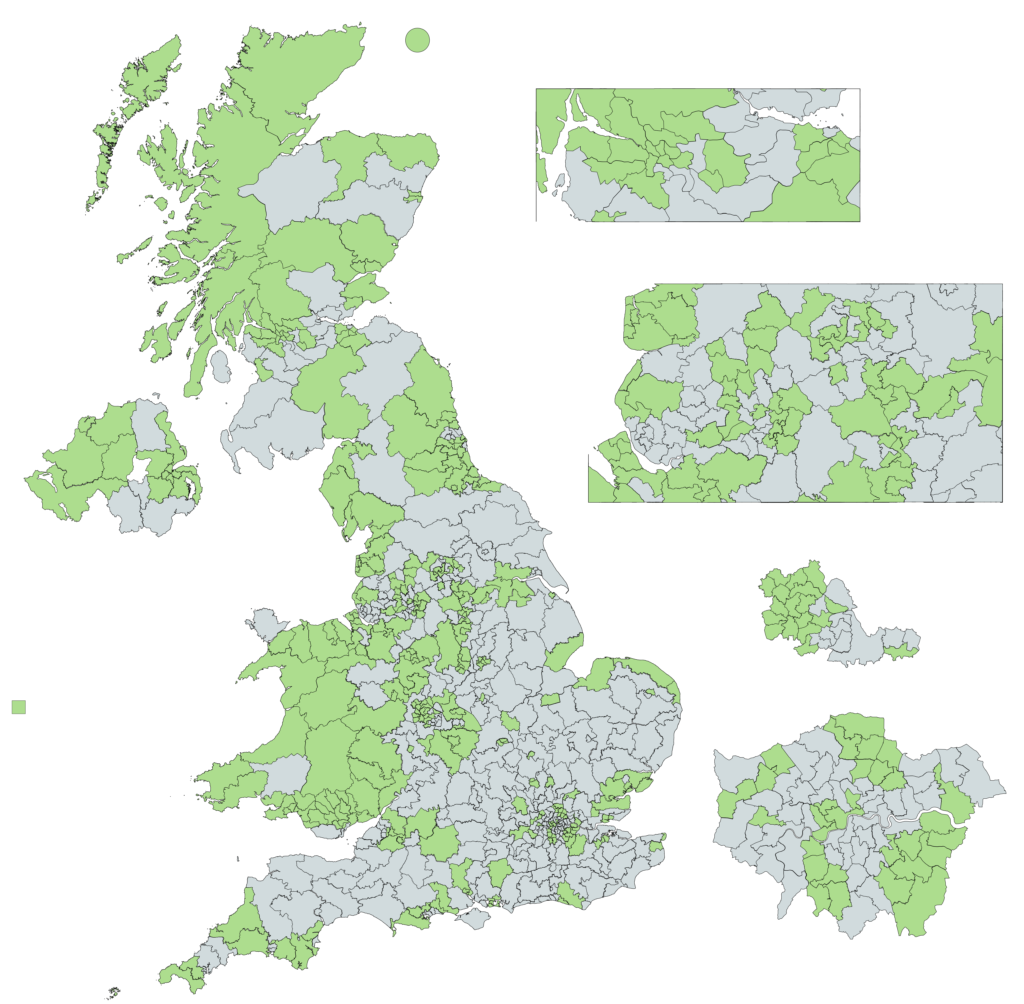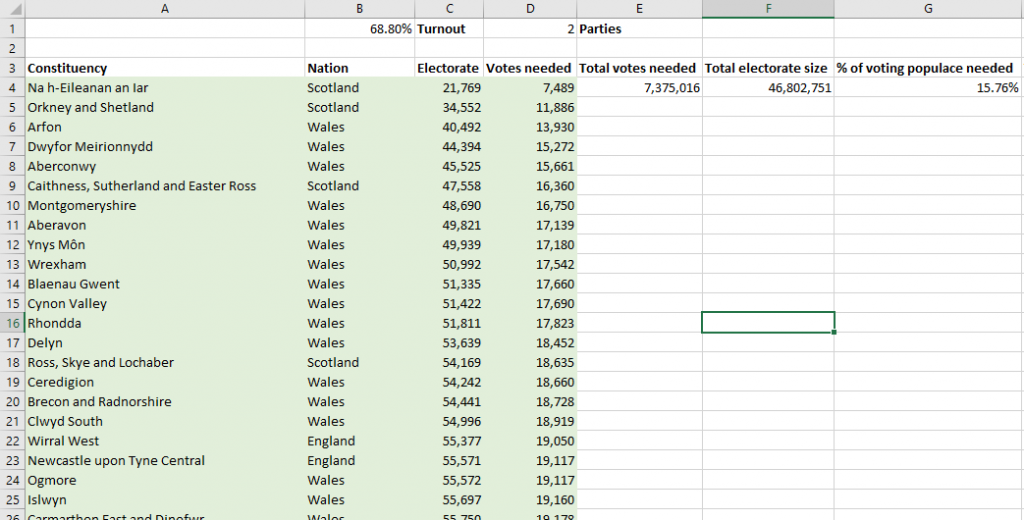Here’s a thought: what’s the minimum number of votes your party would need to attract in order to be able to secure a majority of seats in the House of Commons and form a government? Let’s try to work it out.
The 2017 general election reportedly enjoyed a 68.8% turnout. If we assume for simplicity’s sake that each constituency had the same turnout and that votes for candidates other than yours are equally-divided amongst your opposition, that means that the number of votes you need to attract in a given constituency is:
68.8% × the size of its electorate ÷ the number of candidates (rounded up)
For example, if there was a constituency of 1,000 people, 688 (68.8%) would have voted. If there were 3 candidates in that constituency you’d need 688 ÷ 3 = 229⅓, which rounds up to 230 (because you need the plurality of the ballots) to vote for your candidate in order to secure the seat. If there are only 2, you need 345 of them.

The minimum number of votes you’d need would therefore be this number for each of the smallest 326 constituencies (326 is the fewest number of seats you can hold in the 650-seat House of Commons and guarantee a strict majority; in reality, a minority government can sometimes form a government but let’s not get into that right now). Constituencies vary significantly in size, from only 21,769 registered voters in Na h-Eileanan an Iar (the Western Isles of Scotland, an SNP/Labour marginal) to 110,697 in the Isle of Wight (which flip-flops between the Conservatives and the Liberals), but each is awarded exactly one seat, so if we’re talking about the minimum number of votes you need we can take the smallest 326.

By my calculation, with a voter turnout of 68.8% and assuming two parties field candidates, one can win a general election with only 7,375,016 votes; that’s 15.76% of the electorate (or 11.23% of the total population). That’s right: you could win a general election with the support of a little over 1 in 10 of the population, so long as it’s the right 1 in 10.

I’ll leave you to decide how you feel about that. In the meantime, here’s my working (and you can tweak the turnout and number-of-parties fields to see how that affects things). My data comes from the following Wikipedia/Wikidata sources: [1], [2], [3], [4], [5] mostly because the Office of National Statistics’ search engine is terrible.
0 comments